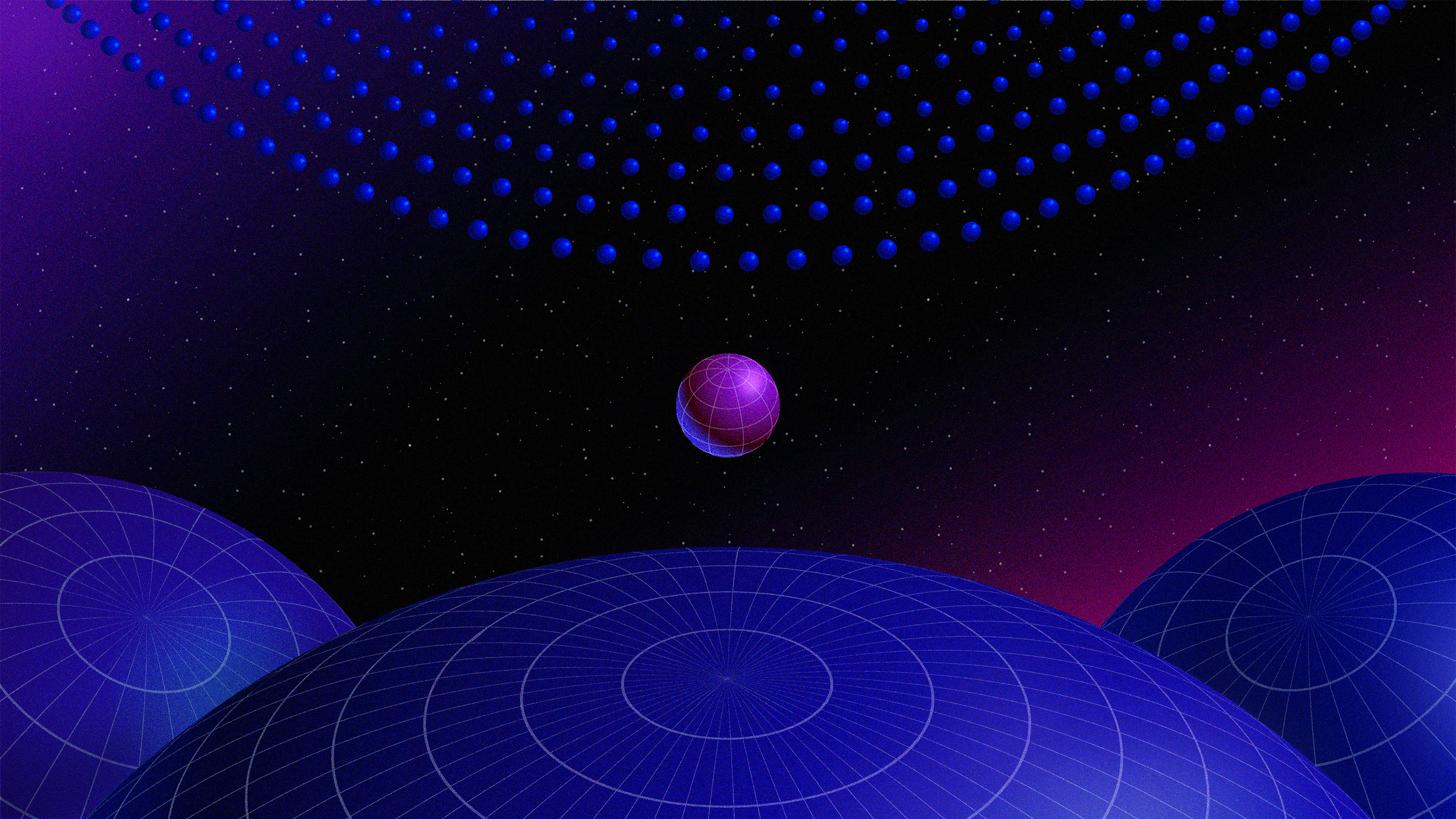Long-Missing Midsize Black Hole Flashes Into View

The intermediate-mass black hole fits the gap between star-size examples and supermassive behemoths.
Samuel Velasco/Quanta Magazine
Introduction
At the heart of almost every large galaxy lies an object of immense proportions — a supermassive black hole. Up to billions of times more massive than our sun, these titans drive the evolution of the galaxies they inhabit.
Yet astronomers can’t figure out how they got so big. Some appear to have formed as early as 600 million years after the Big Bang, when the universe was just 4% of its current age. From our understanding of black hole growth, that seems impossible. “There is simply not enough time to build such a massive black hole so early in the universe,” said Łukasz Wyrzykowski, an astronomer at Warsaw University. Without, that is, something to seed their growth, he said.
Those “seeds” are believed to be intermediate-mass black holes — giant black holes that fall in a mass gap between stellar-mass black holes, formed from dead stars, and supermassive black holes. Intermediate-mass black holes should weigh anywhere from 100 to 100,000 solar masses, and they’re thought to form a crucial step in the growth of the monsters at the centers of galaxies.
The main problem is locating them. “Black holes don’t emit anything,” said Daniel Holz, an astrophysicist at the University of Chicago. “So they’re just really hard to find.”
Astronomers have already identified a few potential intermediate-mass black hole candidates. Last year, they used the Hubble Space Telescope to catch what may be a 50,000-solar-mass black hole eating a star; another 20,000-solar-mass candidate, HLX-1, may be doing the same.
Now researchers say that they’ve used an entirely new method to find a black hole that’s up to 55,000 solar masses. The discovery, published today in Nature Astronomy, introduces a search strategy that has the potential to find many more candidates in the future.
The research was led by James Paynter, a doctoral student at the University of Melbourne. In 2018, Paynter’s supervisor and co-author Rachel Webster asked him to look through a data set of about 2,700 gamma-ray bursts — bright explosions of energy thought to originate from merging neutron stars or giant supernovas — gathered by NASA’s Compton Gamma Ray Observatory between 1991 and 2000.
He was looking for instances where two nearly identical gamma-ray bursts appeared in quick succession. The double flash could indicate that a gamma-ray burst was being “lensed” by an object between it and us — a massive object bending the light of the explosion as it made its way to Earth. A massive object, perhaps, like an intermediate-mass black hole.
In the entire data set of 2,700 gamma-ray bursts, Paynter’s automated software flagged just one event. In 1995, Compton saw a flash from a suspected gamma-ray burst that went off when the universe was about 3 billion years old. Half a second later, it saw an almost identical burst.
The team concluded that an intermediate-mass black hole sat between us and the gamma-ray burst. The gamma-ray burst was slightly offset from the center of the black hole, so its light took two paths, one slightly longer than the other. “The lens affects the path for two photons going around opposite ends,” said co-author Eric Thrane, an astrophysicist at Monash University. “That’s the delay time.”
Samuel Velasco/Quanta Magazine
Not everyone is convinced. One issue, said Natalie Webb, an astrophysicist at the Research Institute in Astrophysics and Planetology in France, is that we don’t know how many intermediate-mass black holes there are in the universe. How lucky would we have to be to have our planet perfectly line up with one such black hole and a gamma-ray burst? “Some people predict an enormous amount, 1,000 per galaxy, in which case this sort of thing would be quite likely to happen,” said Webb. “If you didn’t have such a large population, then yeah, it would be less likely.”
Another issue is that we don’t know enough about gamma-ray bursts — maybe they just naturally repeat in this way. “They’re all so different and weird,” said Holz. “The real question here is: Could this just be a double-bumped gamma-ray burst?” The lensing could also have been caused by a globular cluster — a large collection of old stars — but the team believes this is unlikely, as globular clusters are perhaps 100 times less prevalent than intermediate-mass black holes. “The chances of getting one in the right place are improbable,” said Thrane.
This specific detection occurred more than two decades ago, so we’ll likely never know for certain. The more exciting prospect is that this method — looking for intermediate-mass black holes that act as lenses — could be a way to make many more discoveries in the future. “Identifying a population of intermediate-mass black holes this way, through lensing, would be fascinating,” said Holz. Wyrzykowski has been using data from the Gaia telescope to look for intermediate-mass black holes that bend the light from stars — not gamma-ray bursts — although he’s had no luck so far.
Intermediate-mass black holes would not only give us the crucial seeds to explain supermassive black hole growth; they could also provide evidence for another cosmic mystery — dark matter. Thought to comprise 85% of the mass in the universe, dark matter may itself have been a vital ingredient that fueled the growth of intermediate-mass black holes. “It’s very difficult to produce such a black hole with regular matter,” said Wyrzykowski. “You need to merge many stars, and there’s not enough time in the [early] universe.”
Upcoming telescopes are expected to help in the hunt. The decades-old Compton data has now been exhausted, said Paynter, but there are still about 7,000 more gamma-ray bursts from other telescopes to sift through, and NASA’s Fermi Gamma-ray Space Telescope continues to make detections today. “Now is the time to analyze the rest of the data sets and see if there are more lensing candidates,” he said.
Whether it happens via this method or another, many are hopeful that the mystery of the missing intermediate-mass black holes — and with it, supermassive black hole growth — can soon be solved. “Everyone believes they’re out there,” said Thrane. “They must exist at some point in the universe. It’s just a question of finding where they are.”
Correction: March 30, 2021
The original version of the graphic accompanying this article stated that the light on the longer path should arrive last. In fact, the effect of time dilation near the black hole means that light traveling on the shorter path arrives last.



